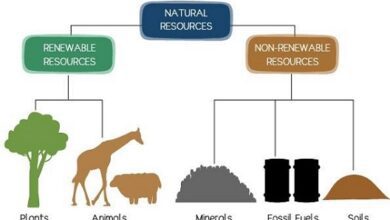What is Gestalt theory fundamental laws and principles
Gestalt theory is a concept that will surely sound like you if you are one of those people who are curious about the world of psychology. It is a theory widely used today in psychotherapy and problem solving, but it has also become popular as one of the most attractive psychological approaches to those who believe that human beings, behavior and feelings cannot be reduced to just what they are . that is directly observable or measurable .
However, if you’ve read anything about Gestalt theory, you’ll also know that it’s not famous for being easily summarized in a single sentence. His philosophical foundations and laws about how we perceive things are rooted in years and years of research, and his formulations about the human mind are not always intuitive.
Therefore, to understand Gestalt theory well, a small change of mentality is necessary, and nothing better to achieve this than to learn in which direction its approach is oriented and what its principles are .
Gestalt theory and its humanistic influences
Gestalt psychology can be framed within the broader scope of humanistic psychology, with its emphasis on each person’s subjective experiences, it gives importance to the positive aspects of psychology such as self-actualization and seeking good decisions, and It works with a conception of the self human being as an agent capable of developing freely and autonomously.
This means that it does not focus on the negative aspects of the mind, as in certain types of psychoanalysis , nor does it limit its object of study to the observable behavior of people, as in behaviorism .
A bit of Gestalt history
Gestalt theory appeared in Germany in the early 20th century as a reaction to behavioral psychology , which rejected the consideration of subjective states of consciousness when investigating people’s behavior and emphasized the effects that family context, and by extension social and cultural, has about us . Unlike behaviorists, researchers who subscribed to Gestalt theory were basically concerned with studying mental processes that at the time were considered something fundamentally invisible, since there were no tools to know well what was happening in the brain.
In this way, Gestalt theory brings us closer to a conception of human beings characterized by their active role when it comes to perceiving reality and making decisions. According to the Gestaltists, we all create in our mind more or less coherent images about ourselves and what surrounds us , and these images are not the simple union of the sequences of information that reach us through our senses, but they are something else.
Constructing reality and interpreting it
The German word Gestalt , which is often translated into Spanish as “form”, represents this process by which we build structures of perception of reality : all people interpret reality and make decisions based on these mental “forms” or “figures”. that we create without realizing it. Gestalt theory focuses on explaining our way of perceiving things and making decisions based on the “ways” we create.
Gestalt theory and the concept of “form”
Some schools of psychology consider that the mental representations created in our consciousness are the sum of pieces of image, sound, touch and memory. In this way, the set of these packets of information that arrive from the senses would be added to our brain and, from this overlapping of units, what we experience would appear.
Gestalt theory, however, denies that there is a perceptual “whole” that is constituted by the set of data that is arriving in our body . Rather, he proposes that what we experience is more than the sum of its parts and therefore exists as a whole, a figure that can only be considered whole. So, what happens is that the globality of our mental “forms” imposes itself on what reaches us through the senses, and not vice versa.
According to this approach, we learn about our surroundings, not adding to the set of information that comes to us through the senses, but from the “pictures” created in our mind. For example, based on the Gestalt theory used in Gestalt therapy created by Fritz Perls (which is not exactly the same as Gestalt psychology, which is older than that), forms of psychotherapy are proposed in which the objective is that the patient can understand certain problems in a global sense different from what he did before and that allows him to develop his potentialities.
Thus, according to the Gestalt theory, people would not be receivers of several sensations, but our mind would be composed of different totalities. For Gestaltists, it is not necessary to focus on the parts where our mental pictures seem to form about something in order to resolve a conflict or adopt a more useful mindset, but what we should be trying to achieve is a new structural understanding of what happens.
Examples to understand the idea of “shape”
An example of this can be found in the movies . Despite being a succession of rapidly passing photographs, we perceive them as something very different: a sequence of moving images .
Although this quality (movement) is not present in the different images, what we experience is a globality that has this property. From a Gestalt theory perspective, this is because we create global shapes about the reality around us, rather than just passively taking in information from everywhere and reacting accordingly.
The same is clearly stated when we see these optical illusions in which two or more superimposed images appear, but we cannot see more than one at a time: the globality of the figure seems to dominate our senses.
The laws of Gestalt
Within Gestalt theory, laws were formulated that explain the principles by which, depending on the context in which we find ourselves, we perceive certain things and not others. These are the Gestalt laws, first proposed by the psychologist Max Wertheimer , whose ideas were developed and reinforced by Wolfgang Köhler (photo) and Kurt Koffka .
The most important law that gives us a better idea about the logic that governs the generation of perceptions as a whole is the law of good form , according to which what we perceive more accurately and quickly are the most complete but, at the same time, simpler or symmetrical.
More laws and Gestalt principles
Other laws of Gestalt theory are:
- The law of the lower figure : we cannot perceive the same shape as a figure and at the same time as the lower part of that figure. The background is everything that is not perceived as a figure.
- Law of continuity : if several elements appear to be placed in a oriented flow somewhere, they will be perceived as a whole.
- Law of Proximity : Elements close to each other tend to be perceived as part of a unit.
- Law of Similarity : Similar elements are perceived as having the same shape.
- The law of closure : a shape is better perceived the more closed its outline.
- Law of completion : an open form tends to be perceived as closed.
What do these “shapes” look like according to Gestalt theory?
Since the forms are a totality, they cannot be reduced to one direction. This means that, for Gestaltists, a mental image is not really a visual image , such as might be produced by projecting light onto a retina, but rather something else. So much so that, for followers of Gestalt theory, Gestalt laws are applicable not only to what is perceived by sight, although they are usually exemplified only with drawings and icons. It is not difficult to imagine examples in which Gestalt laws seem to apply to all kinds of perceptions.
Finally, Gestalt theory proposes a psychological approach in which the person has an active role building units of importance about their experiences and which, in addition, is able to restructure their mental “modes” to adopt more points of view. useful and best guide both for making decisions and for your goals.
Fritz Perls and Gestalt Therapy
Fritz Perls , in line with most postulates of Gestalt psychology, developed his own therapy: Gestalt Therapy . We invite you to get to know them through these two articles:
“Fritz Perls Biography and His Contributions to Psychology”
“Gestalt Therapy: What is it and on what principles is it based?”




